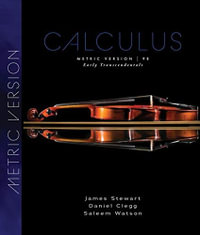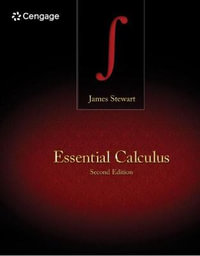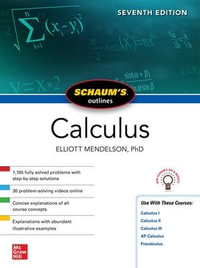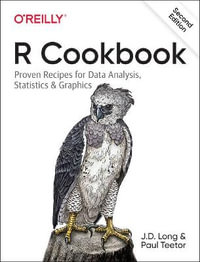I. PD-Operators with Complex Arguments.- 1. PD-Operators with Constant Analytic Symbols.- 1.1. Spaces of entire functions of exponential type.- 1. The space Exp R(Czn) (5). 2. Estimates of derivatives (7). 3. The testfunction space Exp?(Cnz). Topology and convergence (8). 4. Density of linear combinations of exp ?z, ? ? ? (12)..- 1.2. PD-operators with analytic symbols.- 1. Local algebra of differential operators of infinite order (15). 2. Algebra of PD-operators with arbitrary analytic symbols (20). 3. The correctness of the definition of a PD-operator (23)..- 1.3. The operator method.- 1. PD-equations in the whole space Cn (28). 2. The Cauchy problem in the space of exponential functions (30). 3. Cauchy-Kovalevskaya theorem (special case) (35). 4. A two-point boundary value problem (40)..- 1.4. The dual theory.- 1. Exponential functionals. Examples (41). 2. The general form of exponential functionals (43). 3. The algebra of PD-operators in the space of exponential functionals (45). 4. Cauchy problem in exponential functionals (47)..- 2. Fourier Transformation of Arbitrary Analytic Functions. Complex Fourier Method.- 2.1. Fourier transformation.- 1. Main definition. The inversion formula (52). 2. The Fourier image of exponential functions. The Borel kernel (54). 3. Complex unitarity (58)..- 2.2. Complex Fourier method.- 1. Table of duality. Examples (59). 2. Fourier method for PD-equations (62)..- 3. PD-Equations whose Symbols are Formal Series.- 3.1. Differential operators of infinite order with constant coefficients.- 1. The space Eq,r Czn of entire functions of order q order with variable coefficients.- 1. Definition of a d.o.i.o. with variable coefficients (76). 2. The Cauchy problem in the spaces Eq,rCzn (78). 3. The Cauchy problem in the spaces Eq,r+? Czn.- II. The Cauchy Problem in the Complex Domain.- 4. Cauchy-Kovalevskaya Theory in Spaces of Analytic Functions with Pole-type Singularities.- 4.1. The Cauchy problem in the spaces Dm,r (Case of cylindrical evolution).- 1. The test-function space Dm,r (90). 2. Criterion for the well-posedness of the Cauchy problem in the spaces Dm,r (91). 3. The structure of systems with ord Aij ? mi - mj (96). 4. The Cauchy problem in the dual spaces D'm,r (98)..- 4.2. The Cauchy problem in the spaces Dm,r_?.- 1. The test-function space Dmr_?t.- 4.3. Formulation of the basic results for arbitrary systems in normal form.- 5. Exponential theory of the Cauchy problem.- 5.1. The Cauchy problem in the scale of spaces of initial data.- 1. Banach spaces of entire functions of finite order (120). 2. Criterion for the well-posedness of the Cauchy problem in the scale Expm,r,q( Czn) (123). 3. The structure of systems satisfying the conditions deg {IEqu1 ix-1}..- 5.2. The Cauchy problem in the scale of "linearly increasing" spaces of initial data.- 1. The scale Expm,r+?.- 2. Criterion for the well-posedness of the Cauchy problem in the scale Expm,r+?.- 6. PD-Operators with Variable Analytic Symbols.- 6.1. Basic definitions.- 1. Definition of the PD-operator A (z,D) (157). 2. Definitions of the requisite spaces (159)..- 6.2. The Cauchy problem in the scale Expm,r(Czz).- 6.3. The Cauchy problem in the scale Expm,r+?.- Conclusion: The connection between the Cauchy exponential theory and the classical Cauchy-Kovalevskaya theory.- III. PD-Operators with Real Arguments.- 7. Spaces of Test Functions and Distributions.- 7.1. The test-function space H?(SR).- 1. Definition and examples of test functions (176). 2. Description of H?(SR) in the x-variables (178). 3. Convergence in H?(SR) (179). 4. Invariance of H?(SR) under differential operators of infinite order (180). 5. An example (181)..- 7.2. The generalized function space H-?(SR).- 1. Definition of H-221E; (SR). Main property (182). 2. Examples of functionals in H-?(SR) (185)..- 7.3. Sobolev spaces of infinite order W?{a?},p (Rn).- 1. Criterion for non-triviality of the spaces W?{a?,p}(Rn) (188). 2. The distribution space W-?{a?,p?}(Rn) (193)..- 8. Analytic PD-operators with Real Arguments. Applications.- 8.1. Algebra of PD-operators with analytic symbols.- 1. The space H?(G) (196). 2. The action of PD-operators (198). 3. Examples (201). 4. The dual theory (203). 5. A possible generalization (205)..- 8.2. PD-equations in the whole Euclidean space.- 8.3. The Cauchy problem.- 1. The Cauchy problem in the space H?(G) (208). 2. The Cauchy problem in the dual space H-?(G) (211). 3. On the existence of the fundamental solution of the Cauchy problem (213)..- 8.4. Examples.- 1. The Cauchy problem for a homogeneous equation (214). 2. Special case. Laplace equation (216). 3. The Cauchy problem for the heat equation (218). 4. One equation with a shift (218). 5. Quasipolynomial solutions (219). 6. One boundary value problem in a strip (220). 7. The boundary value problem in the cylinder (221). 8. The Dirichlet problem in a disc. Poisson integral (222). 9. The Dirichlet problem in the half-plane. Cauchy integral (224). 10. Analytic continuation of a pair of functions defined on ?1 (225)..- 8.5. Quantum relativistic particle with zero spin.- 1. Derivation of the Schrodinger equation (226). 2. Fundamental solution of the Cauchy problem (230). 3. Lorentz invariance (233). 4. Description of Lorentz-invariant solutions (236). 5. Recurrence formulae for the Lorentz-invariant solutions (238). 6. Non-relativistic limit and factorization of Klein-Gordon-Fock operator (239)..- References.- Author Index.- Index of Basic Formulae.
























